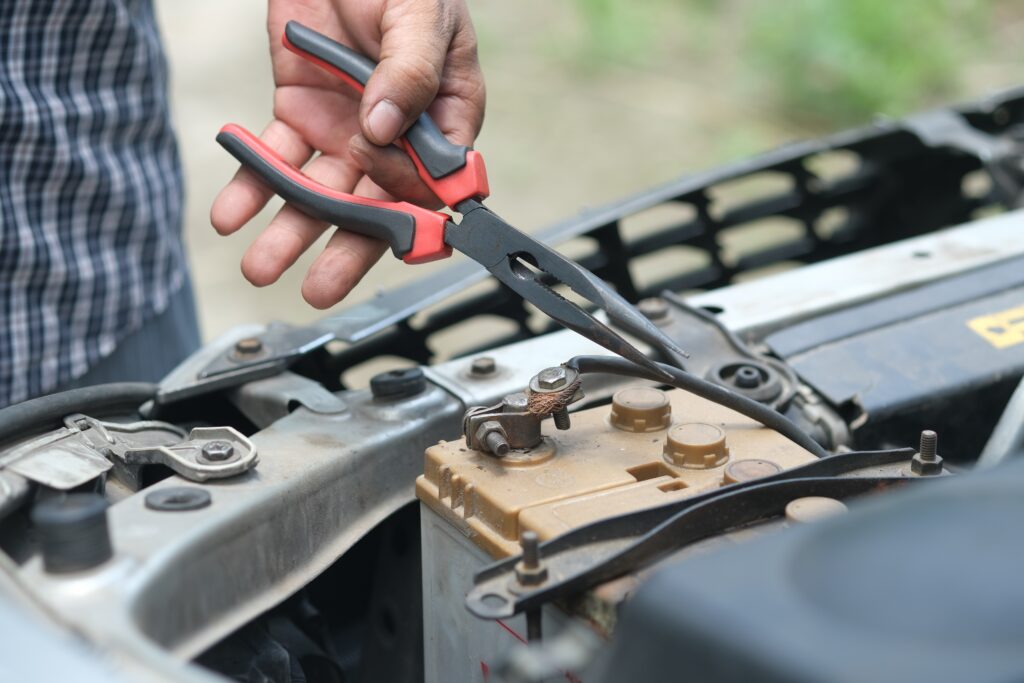Have you ever wondered if a bad exhaust could be the culprit behind your car’s misfiring? Well, you’re in luck! In this article, we will explore whether a bad exhaust can indeed lead to your car’s engine misfiring. Join us as we take a closer look at the various factors that can contribute to this issue and uncover the truth behind this potential cause. So, if you’ve been experiencing misfires in your vehicle, stick around to find out if your bad exhaust is to blame!
Understanding Car Misfires
Definition of a car misfire
A car misfire refers to a condition where one or more cylinders in a car’s engine fail to ignite the air-fuel mixture properly. This can result in a variety of issues, including poor engine performance, decreased fuel efficiency, and increased emissions. In simple terms, a misfire occurs when the combustion process in the engine is disrupted, leading to a loss of power and an uneven running engine.
Signs of a car misfire
There are several telltale signs of a car misfire that drivers should be aware of. These include a rough idle, where the engine vibrates or shakes when the vehicle is stationary. Additionally, a misfiring engine may produce a loss of power or acceleration, causing the vehicle to feel sluggish. Other signs can include an increase in fuel consumption, a strong smell of fuel, and even the illumination of the check engine light on the dashboard. If any of these symptoms are experienced, it is important to address the issue promptly to avoid further damage to the engine.
Common causes of a car misfire
Several factors can contribute to a car misfire. One common cause is a faulty ignition system, where the spark plugs, ignition coils, or ignition wires are worn out or malfunctioning. Another potential culprit is a clogged or dirty fuel injector, which can disrupt the fuel delivery to the engine. Additionally, a malfunctioning mass airflow sensor or oxygen sensor can cause a misfire by sending incorrect signals to the engine control unit. Low fuel pressure, a vacuum leak, or even a cracked distributor cap can also lead to a misfiring engine. Proper diagnosis is crucial to identify the exact cause and address it effectively.
What is a Bad Exhaust
Explanation of a car exhaust system
Before understanding the impact of a bad exhaust on a car’s performance, it is essential to grasp the basics of a car exhaust system. The exhaust system plays a vital role in removing the harmful gases produced during the combustion process from the engine and directing them away from the vehicle. It consists of several components, including the exhaust manifold, catalytic converter, muffler, and tailpipe. The exhaust gases pass through these components, where they are filtered, muffled, and expelled safely into the environment.
Signs of a bad or failing exhaust
Identifying a bad or failing exhaust system can be relatively straightforward if you know what to look for. One of the most common signs is the presence of loud or unusual noises coming from the exhaust system. These noises can range from a hissing or popping sound to a deep rumble or loud roar. A bad exhaust may also emit a strong smell of gasoline or sulfur, indicating a potential leak. Additionally, excessive smoke from the tailpipe, particularly if it is black, can indicate a problem with the exhaust system. Lastly, visual inspection may reveal signs of corrosion, rust, or physical damage to any part of the exhaust system.
Impact of a bad exhaust on car performance
A bad or failing exhaust system can significantly impact a car’s overall performance. One primary effect is a loss of power and reduced acceleration. This occurs because the backpressure in the exhaust system, which helps to optimize engine performance, is disrupted. Without proper backpressure, the engine may struggle to expel exhaust gases efficiently, resulting in decreased power output. Furthermore, a damaged exhaust system can lead to reduced fuel efficiency, as the engine may have to work harder to overcome the lack of proper airflow. Additionally, a malfunctioning exhaust can negatively affect the engine’s air-fuel mixture, leading to poor combustion and increased emissions.

Can a Bad Exhaust Cause a Car to Misfire
Connecting a bad exhaust to car misfires
While a bad exhaust system may not directly cause a car to misfire, it can contribute to conditions that increase the likelihood of misfires occurring. The disruption of backpressure, which is crucial for engine performance, can lead to an imbalance of the air-fuel mixture inside the cylinders. This imbalance can cause the spark plugs to struggle in igniting the mixture properly, resulting in misfires. Additionally, a damaged exhaust system may lead to exhaust leaks, which can introduce unfiltered air into the engine. This unfiltered air can upset the delicate balance required for combustion, potentially leading to misfires.
How a malfunctioning exhaust could trigger a misfire
A malfunctioning exhaust system can trigger a misfire by influencing two key factors: the air-fuel mixture and engine backpressure. As mentioned earlier, a bad exhaust disruption of backpressure can throw off the balance of the mixture, making it harder for the spark plugs to ignite it consistently. The lack of backpressure also affects the scavenging effect, where the exhaust gases help draw in the fresh air-fuel mixture. Without this proper flow, the cylinders may receive an uneven amount of fuel, leading to misfires. Furthermore, exhaust leaks can introduce oxygen into the mixture, causing it to become lean and increasing the likelihood of misfires.
Mechanisms of Exhaust-induced Misfires
Impact of exhaust leaks
Exhaust leaks are a common consequence of a bad exhaust system, and they can have a significant impact on engine performance. These leaks occur when there are gaps or cracks in the exhaust system, allowing the escape of exhaust gases before they pass through the catalytic converter. When these gases leak out, fresh oxygen is introduced into the exhaust stream, resulting in an incorrect air-fuel mixture. This can lead to misfires, as the fuel may not ignite properly due to the presence of excess oxygen.
Role of backpressure
Backpressure is an essential factor in maintaining the optimal air-fuel mixture within the cylinders. It ensures that the exhaust gases are evacuated efficiently from the engine, allowing for the proper intake of fresh air and fuel. A bad exhaust system, such as one with a damaged muffler or a failed catalytic converter, can disrupt the backpressure balance. Without adequate backpressure, the exhaust gases may linger in the cylinders for too long or be expelled too quickly. Both scenarios can lead to misfires, as the combustion process is not occurring at the optimal timing or conditions.
Implications of damaged exhaust valves
Another potential mechanism for exhaust-induced misfires is through the damage or malfunctioning of exhaust valves. The exhaust valves play a significant role in controlling the flow of exhaust gases out of the cylinder. If these valves are damaged or not functioning correctly, they may not close properly, leading to the escape of exhaust gases into the combustion chamber. This can result in the dilution of the air-fuel mixture, making it harder for the spark plugs to ignite it consistently, leading to misfires.

Other Problems Related to Bad Exhaust
Decreased fuel efficiency
A bad exhaust system can have a direct impact on the fuel efficiency of a vehicle. When backpressure is disrupted, the engine has to work harder to expel exhaust gases, resulting in increased fuel consumption. The engine compensates for the lack of proper backpressure by adjusting the air-fuel mixture, causing it to become richer. This rich mixture burns more fuel but does not produce an equivalent increase in power, ultimately leading to reduced fuel efficiency.
Increased engine noise
One noticeable consequence of a bad exhaust system is an increase in engine noise. When the exhaust system is damaged or not functioning correctly, it fails to muffle the sound of the engine effectively. This can result in louder engine noises, including rattling, hissing, or rumbling sounds. The increased noise is a clear sign that the exhaust system is not working as it should and may require prompt attention.
Damage to the catalytic converter
A bad exhaust system can also cause damage to the catalytic converter, a critical component responsible for reducing harmful emissions. When the exhaust system fails to filter the exhaust gases properly, the unfiltered gases can pass through the catalytic converter, causing it to overheat and potentially malfunction. A damaged or failed catalytic converter can result in increased emissions, reduced engine performance, and even failing an emissions test.
Unhealthy fumes
A deteriorating exhaust system can pose health risks to both the driver and passengers. A bad exhaust may emit toxic fumes, such as carbon monoxide, into the cabin of the vehicle. Inhaling these fumes can be hazardous and may lead to symptoms such as dizziness, headaches, nausea, or even loss of consciousness. It is crucial to address any exhaust issues promptly to ensure the safety and well-being of everyone in the vehicle.
How to Diagnose a Misfire
Steps in diagnosing a misfire
Diagnosing a misfire requires a systematic approach to identify the underlying cause. The following steps can guide you through the process:
- Check the check engine light: If the check engine light is illuminated, use an OBD-II scanner to retrieve the diagnostic trouble codes (DTCs). These codes can provide valuable information about the specific cylinder or system that is experiencing a misfire.
- Inspect the spark plugs: Remove the spark plugs and inspect them for signs of wear, damage, or fouling. Spark plugs that are worn out, covered in carbon deposits, or have damaged electrodes may need to be replaced.
- Check the ignition system: Inspect the ignition coils, ignition wires, and distributor cap (if applicable) for any signs of damage or malfunction. Faulty ignition components can disrupt the spark delivery to the cylinders, leading to misfires.
- Scan the fuel system: Use a fuel pressure gauge to check the fuel pressure. Low fuel pressure can result in a lean or weak air-fuel mixture, causing misfires. Additionally, inspect the fuel injectors for clogs or leaks, as these can also contribute to misfires.
- Examine the air intake system: Inspect the air filter and mass airflow sensor for any signs of blockage or damage. A restricted airflow can affect the fuel mixture, resulting in misfires.
- Check for vacuum leaks: Inspect all vacuum hoses, gaskets, and connections for leaks or damage. A vacuum leak can disrupt the air-fuel mixture, leading to misfires.
Tools needed in misfire diagnosis
To properly diagnose a misfire, several tools may be needed. These include:
- OBD-II scanner: This diagnostic tool is used to retrieve diagnostic trouble codes and provide valuable information about the specific cylinder or system experiencing the misfire.
- Spark plug socket and wrench: Used to remove and inspect the spark plugs for wear, damage, or fouling.
- Fuel pressure gauge: Measures the pressure of the fuel in the fuel system to ensure it meets the manufacturer’s specifications.
- Multimeter: Used to test the electrical components of the ignition system, such as ignition coils and wires, for continuity and proper functioning.
- Compression tester: Measures the compression in each cylinder to determine if there are any issues with the internal components of the engine, such as worn piston rings or valves.
Relating symptoms to potential causes
When diagnosing a misfire, it is vital to gather as much information as possible about the symptoms and when they occur. Relating the symptoms to potential causes can help narrow down the underlying issue. For example, if the misfire occurs only under heavy acceleration, it may indicate a problem with the fuel delivery system. On the other hand, if the misfire is constant and occurs at idle, it may be related to the ignition system. Careful consideration of the symptoms can help guide the diagnostic process and ensure an accurate diagnosis.

How to Diagnose a Bad Exhaust
Steps in diagnosing a bad exhaust
Diagnosing a bad exhaust system requires a thorough inspection and examination of the components. The following steps can guide you through the process:
- Visual inspection: Conduct a visual inspection of the entire exhaust system, including the exhaust manifold, catalytic converter, muffler, and tailpipe. Look for signs of corrosion, rust, physical damage, or loose connections. Check for any visible leaks, such as soot or carbon deposits around the joints or seams.
- Listen for unusual sounds: Start the engine and listen for any unusual sounds coming from the exhaust system. Pay attention to hissing, popping, rattling, or loud roaring noises. These sounds can indicate leaks, cracks, or damaged components within the exhaust system.
- Exhaust smoke: Observe the color and consistency of the exhaust smoke. Excessive smoke, particularly if it is black or white, can indicate a problem with the exhaust system. Black smoke can indicate a fuel-rich mixture, while white smoke may suggest coolant leaking into the exhaust system.
- Oxygen sensor inspection: Inspect the oxygen sensors for signs of damage or malfunction. Faulty oxygen sensors can cause improper readings, leading to a misinterpretation of the air-fuel mixture and potential misfires.
- Professional inspection: If the visual inspection and basic tests do not reveal any obvious issues, consult a professional mechanic or exhaust specialist. They have the expertise and specialized equipment to conduct a more in-depth diagnosis of the exhaust system.
Visual inspection of the exhaust system
To begin diagnosing a bad exhaust system, a visual inspection is essential. Carefully examine all components of the exhaust system, starting from the exhaust manifold near the engine and ending at the tailpipe. Look for any signs of corrosion, rust, physical damage, or loose connections. Pay close attention to the joints, seams, and welds, as these areas are most likely to develop leaks. Additionally, check for any visible soot or carbon deposits, as these can indicate leaks or cracks in the exhaust system.
Listening for unusual exhaust sounds
While conducting a visual inspection is important, listening for unusual sounds can also provide valuable information about the condition of the exhaust system. Start the engine and listen for any hissing, popping, rattling, or loud roaring noises. These sounds can indicate leaks, cracks, or damaged components within the exhaust system. A hissing sound may suggest an exhaust leak, while a popping or rattling noise may point to a loose or damaged muffler or catalytic converter. A loud roaring sound, similar to that of a racing car, can indicate a damaged or missing muffler.
Conclusion
In conclusion, While a bad exhaust system may not directly cause a car to misfire, it can contribute to conditions that increase the likelihood of misfires occurring. The disruption of backpressure, the introduction of unfiltered air, and damage to exhaust valves are all potential mechanisms by which a malfunctioning exhaust can trigger misfires. Additionally, a bad exhaust system can lead to decreased fuel efficiency, increased engine noise, damage to the catalytic converter, and the emission of unhealthy fumes. Proper diagnosis of both misfires and bad exhaust systems is crucial to address these issues promptly and ensure the optimal performance and safety of the vehicle. By understanding the signs, causes, and implications of these problems, you can take the necessary steps to maintain your car’s health and prolong its lifespan. Remember, a well-maintained and properly functioning exhaust system is essential for a smooth and efficient driving experience.
